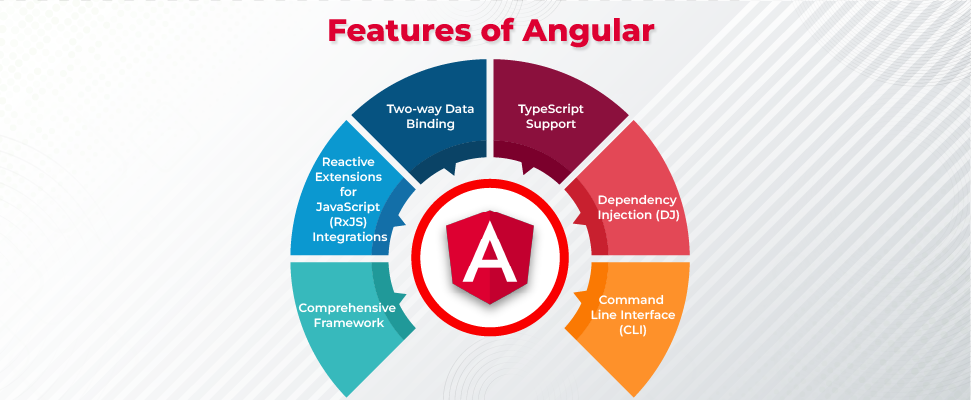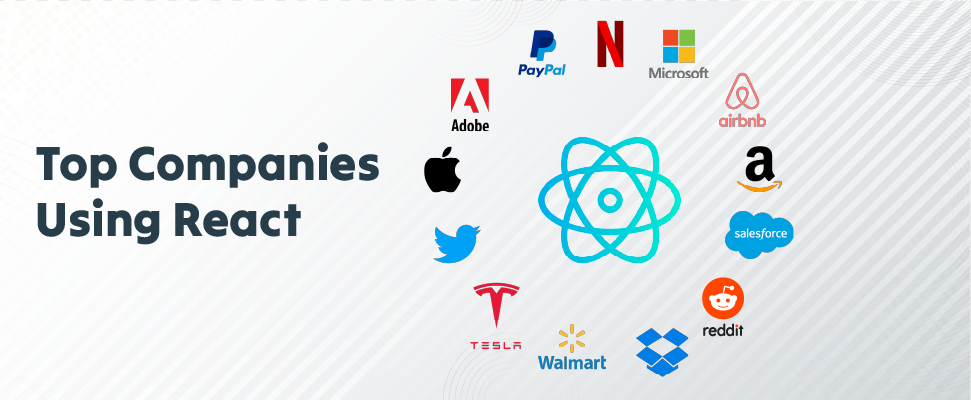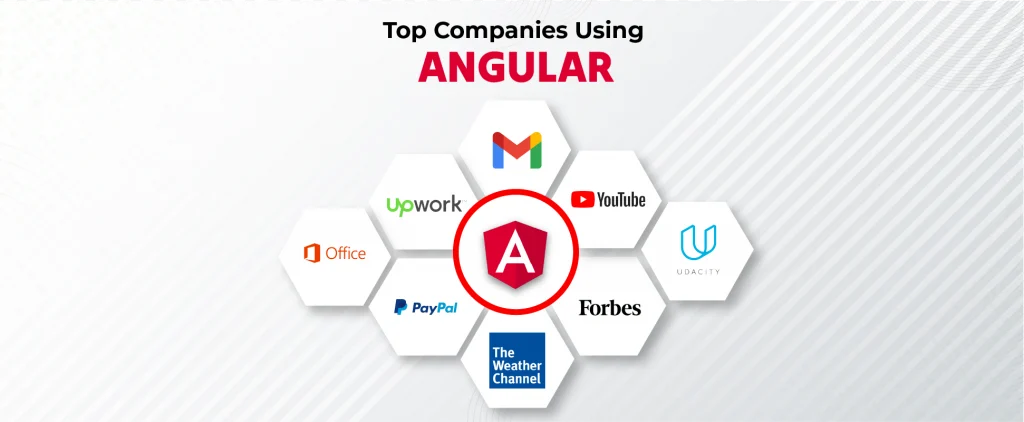Table of Contents
ToggleIntroduction
React and Angular are versatile languages to build dynamically interactive and scalable web applications. Hence, there’s a never-ending debate regarding their merits within the development community. Both are highly popular JavaScript frameworks brimming with resources to support project needs.

Don't miss out on your chance to work with the best!
Apply for top job opportunities today!
What is React?

ReactJS is a JavaScript library well-known for its reusability of UI components. It promotes the development of reusable UI components and offers a one-way data flow approach. Thus, it tremendously reduces the amount of redundant code and enhances clarity. The complete history of React latest versions is available on GitHub.
Features of React

- One-directional Data Flow: This data flow uses an organized hierarchal structure i.e., parent and child components. Whenever data in the parent component changes, it re-renders that particular component and passes it down to the child through a mechanism called props. Because of this, it promotes predictability, maintainability, and better performance.
- Virtual DOM: It is a lightweight representation of the actual DOM that uses the key optimization technique to improve the performance of web applications. When the UI needs any updates it minimizes the changes made to the actual DOM. This feature allows React developers to speed up the application rendering process and also offer smooth user experience.
- JavaScript XML (JSX): It lets developers define components and write HTML-like syntax within JavaScript code, enabling it to work seamlessly with UI and easy visualization.
- React State Management and Redux: React can be easily integrated with JavaScript libraries and frameworks. This allows developers to leverage the strengths of each technology. Whereas React state management focuses only on managing state applications and Redux, on the other hand, takes care of the navigations.
- Large and Active Community: React offers a huge collection of third-party tools, libraries, and resources available to enhance development and resolve common challenges.
Read More- Svelte vs React - Which Framework Is Better?
Pros & Cons of React
| Pros | Cons |
|---|---|
| Supports JSX | Requires learning new skills regularly |
| Seamless migration | Fast-changing ecosystem |
| Improved load time | Dependability on third-party tools for routing solution |
| Reusable code | Promotes inline scripting and JSX |
| Flexibility and robust performance | No built-in dependencies injection |
| Supports mobile app development | Calls for knowledge in JSX |
| Easy debugging | Performance optimization in complex applications is difficult |
| Integration with third-party libraries | Frequent updates can be time consuming |
What is Angular?

Angular is used to build enterprise Single-page Web Applications (SPAs). It promotes a modern MVVC framework and uses HTML and TypeScript. It implements core and optional functionality as a set of TypeScript libraries whenever users import them into apps.
Features of Angular

- Two-way Data Binding: Changes made in the application state are automatically updated in the UI elements. This feature minimizes the need for DOM manual manipulation with the seamless development process.
- TypeScript Support: It is a statically typed superset of JavaScript that catches errors at compile time. As a result, it provides high code quality, robust tooling support, and enhanced maintainability.
- Dependency Injection (DJ): This feature provides a robust DJ system to maintain and inject dependencies into components. Thus, this ensures the modularity and maintainability of large Angular applications.
- Command Line Interface(CLI): Angular uses CLI which helps you with setting up the project, development, testing, and deployment tasks.
- Reactive Extensions for JavaScript (RxJS) Integrations: This feature is beneficial in handling asynchronous operations. Plus, working with streams of data and events in reactive is exceptionally easy and efficient.
- Comprehensive Framework: It comes with a wide range of built-in features including routing, forms handling, and HTTP client.
Pros & Cons of Angular
| Pros | Cons |
|---|---|
| Robust command line interface (CLI) | Difficulty debugging large applications |
| Simple mobile app development process | Verbose code results in slow development |
| Easy to maintain and update | No trade-off factor in modern-day computers |
| Supports AJAX, HTTP, and Observables | Larger bundle sizes impact initial loading time on slow network |
| Fast server-side rendering | Need to be familiar with RxJS and reactive concepts |
| Supports mobile app development | Limited SEO |
| Clean code development | Dependency Injection can make the codebase complex |
| Supports parallel running components | Two–way data binding can slow down the rendering process for complex applications |
When Should You Choose Angular vs. React?

Generally, Angular is an ideal choice to build complex, data-driven, and large web applications with a focus on stability. React, on the other hand, is known for reusable UI components and handling the view layer with frequent data updates. The choice between them is based on project requirements, team expertise, and scalability requirements. Let’s have a look at the breakdown of their benefits:
Angular Benefits

- Maintainability and Scalability of Complex Applications: Angular architecture is component-based, so it breaks applications into modular components. These modular components later handle complex applications using directives. This modular design further helps in simplifying scalability without disrupting the entire system. Moreover, it ensures the longevity of development and efficient maintenance.
- Customization Options: Angular provides a feature-rich and flexible framework customization of template, styling, behavior, and data binding. Let’s see these customization options in detail:
- Template: Developers can easily customize the HTML template in the component and render UI elements.
- Styling: It supports CSS, SCSS, and even CSS-in-JS libraries, so developers can style their designs according to their brand guidelines. Or else they can seamlessly adapt them to fit with various themes.
- Behavior and Logic: Typescript allows developers to define custom behaviors and logic in UI elements. This process ensures smooth user interactions, data manipulation, and state management within your components. As a result, it provides highly interactive and responsive websites and applications.
- Data Binding: The two-way data binding feature makes effortless synchronizations of data between UI elements and the data model. As a result, developers can create dynamic real-time user interfaces.
- Enterprise Grade to Mid-Level Projects: Angular does not rely on third-party plugins and integrations. Its robust built-in feature and structured framework are enough to handle highly complex to moderately graded projects.
- Profound Knowledge of Java and C# is a Plus: If developers have expertise in C# and Java, then they want to combine these three languages can lead to higher productivity.
React Benefits

- View Layer Applications: In app development process, an application is usually divided into different layers and components. One of which is the “view layer, ” which React uses to further maintain the UI’s looks and behavior. Furthermore, its great strength is the reusability of a UI component that simplifies development, enhances maintainability and ensures consistency.
- Virtual DOM: Developers can change the data without reloading the page. Virtual DOM enables updates to the UI efficiently.
- Cross-platform Compatibility: React Native framework makes cross-platform cross-platform compatibility easy, making it the best choice for mobile app development.
- Personalized and Customized App Solution: React’s flexible component-based architecture, effortless rendering, and state management ability helps in the creation of customized and personalized apps.
- Prior Knowledge in HTML, CSS, and JavaScript: React is suitable for a team of developers who have expertise in HTML, CSS, and JavaScript.
- Multiple Event Handling: React lets developers define event handlers within your components to respond to user actions like clicks, form submissions, or keyboard input.
Real-life Use Case of React and Angular
Both of these tools offer feature-rich tools and play a pivotal role in web development. Due to this, many tech giants and popular online sites leverage these frameworks to ensure smooth management of web applications and improve user experience.

React is used by companies such as–
➜Netflix
➜Airbnb
➜Facebook
➜WhatsApp Web and
➜Instagram

Likewise, Angular is used by the following companies:
➜Weather Report Channel
➜YouTube
➜Upwork
➜Google and
➜PayPal
Final Words
Both frameworks provide a robust solution but you should weigh the options in terms of above mentioned key points. Most importantly, you must consider the complexity of projects and team expertise. This way you can easily choose one appropriate framework that perfectly aligns with the project requirements.
Take control of your career and land your dream job!
Sign up and start applying to the best opportunities!

FAQs
React has more downloads and ratings and has been comparatively high in demand over the last five years. Securing its spot in the second position amongst the most used web frameworks around the world.
- First of all, React is the library, and Angular on the other hand is a full-fledged framework.
- Secondly, Angular uses DOM along with two-way data binding whereas React uses virtual DOM with one-way data binding.
They both are best for SEO as they have Server-side rendering capabilities that can tremendously improve the SEO performance of websites.
In terms of animation, Angular is the champion and in contrast, React has simple capabilities, but it integrates well with third-party support.
- Firstly, it promotes DOM implementation and rendering optimizations.
- Secondly, it offers many pre-built solutions.
- Lastly, it also encourages simple switches between the versions of React.

